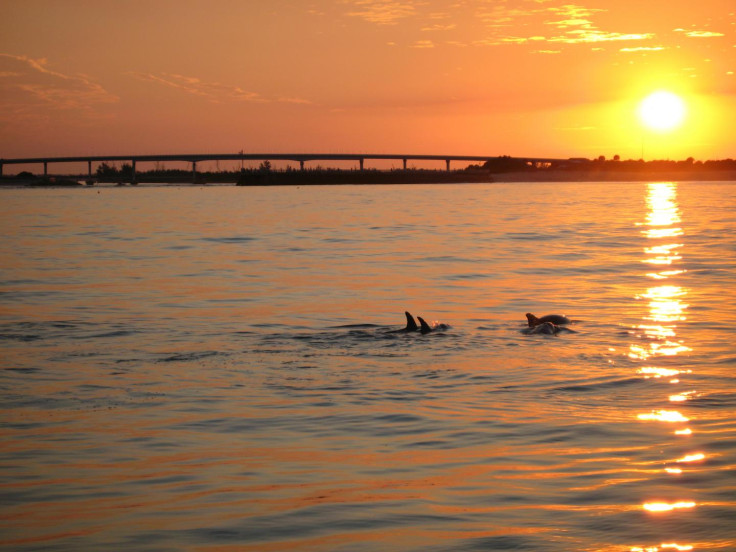Animal behaviour: Social networks of the dolphin kind

Like humans, dolphins too have networks of friends with specific preferences and aversions to fellow dolphins, a study has discovered.
Scientists at Harbor Branch Oceanographic Institute (HBOI) at Florida Atlantic University took a closer look at the interactions between the social bottlenose dolphins in the Indian River Lagoon (IRL) to see the clear association patterns.
In their paper recently published in the journal Marine Mammal Science, the team wrote that individual dolphins have dolphins they like and associate with some and some they avoid.
The dolphins clustered into groups of associated animals, or "communities," that tended to occupy discrete core areas along the north-south axis of the lagoon system.
Interestingly, the physical dimensions of the lagoon they occupied influenced their behaviour with fellow dolphins.
"For example, communities that occupy the narrowest stretches of the Indian River Lagoon have the most compact social networks, similar to humans who live in small towns and have fewer people with whom to interact," said Elizabeth Murdoch Titcomb, research biologist at HBOI who worked on the study with Greg O'Corry-Crowe, PhD, associate research professor at HBOI; Marilyn Mazzoil, senior research associate at HBOI, and Elizabeth Hartel.
Intensive photo-ID surveys conducted along the IRL carried out over a six-and-a-half year period gave deeper insight into the lives and habitat preferences of 200 individual dolphins.
The study gives scientists and resource managers the roadmap to understand how dolphin populations perceive and use their environment, and how social networks will influence potentially breeding behavior and disease transmission.
Social animals
Earlier studies placed dolphins on the top level of animal cognitive sophistication, comparable to humans after showing their ability to recall events and individuals after 20 long years.
A University of Chicago study saw dolphins recall the whistles of former mates proving the complex social connections they have evolved.
Dolphins are known to have their own signature whistles that function similar to names in humans.
The 'flipper' or bottle-nosed dolphins called the Tursiops truncatus are widely distributed in cold temperate and tropical waters where they have the distinct inshore and offshore populations.
Research indicates they are conscious breathers and need to be awake or half-awake to breathe. Sleep occurs in a semi-conscious state and for few minutes only, says the Australian Dolphin Research Institute.
The main threat to dolphins is from habitat degradation and pollution, while disease and tourism pressures also poses significant dangers.
The IRL is a 156-mile long estuary located on Florida's east coast. The lagoon is long and narrow and composed of three distinct water bodies; Mosquito Lagoon, Banana River, and the Indian River.
Researchers from HBOI have been conducting photo identification studies of IRL bottlenose dolphins since 1996, identifying more than 1,700 individual dolphins.
Among the findings enabled by this data is identification of a distinct IRL stock now breeding its third generation since the study began.
© Copyright IBTimes 2025. All rights reserved.





















